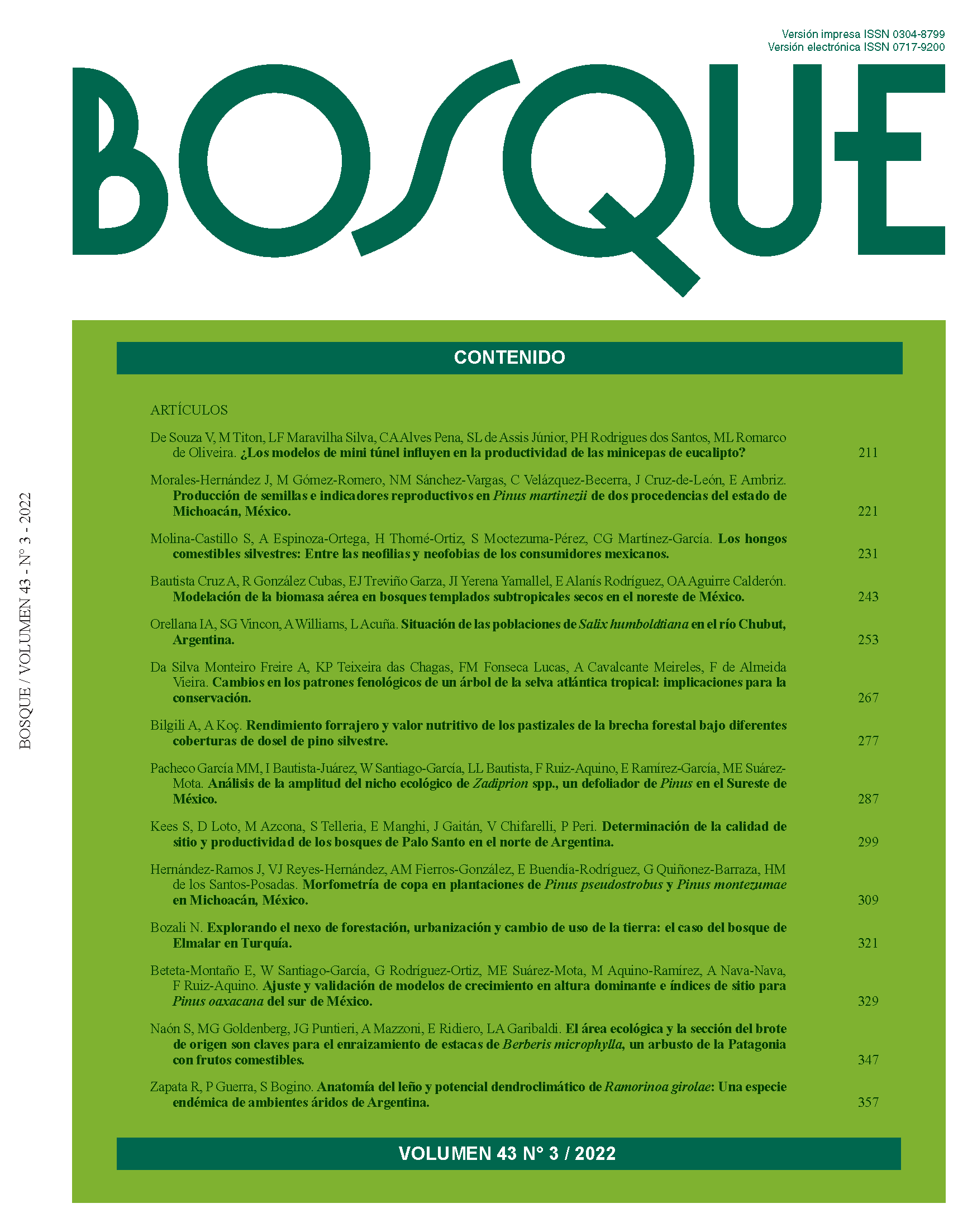Anatomía del leño y potencial dendroclimático de Ramorinoa girolae: Una especie endémica de ambientes áridos de Argentina
Contenido principal del artículo
Resumen
Chica (Ramorinoa girolae, Fabaceae) es una especie esencial de los ambientes áridos de Argentina. Protege las cuencas y la fauna además de ser un recurso alimenticio para uso humano. A pesar de ser una especie de triple impacto, poco se conoce sobre su dinámica de crecimiento y sus adaptaciones anatómicas a estos ambientes. El objetivo de este trabajo es describir la anatomía de su leño, su dinámica de crecimiento, establecimiento y relación con el clima. Se obtuvieron muestras de tres sitios de estudio sobre las que se aplicaron estudios anatómicos y técnicas dendrocronológicas estándares. Después de la datación, la cronología residual se relacionó con las variables climáticas: temperatura e índice de oscilación del Sur (SOI). Los resultados muestran que chica posee porosidad variable (difusa, semicircular o circular) con vasos solitarios o múltiples. La densidad de los vasos cambia anualmente en cada anillo de crecimiento. Los radios estratificados son considerados características de leño altamente especializado, vasos de mayor diámetro en el comienzo de la estación de crecimiento y el parénquima terminal nos permitieron determinar el límite de los anillos de crecimiento. Los anillos ausentes y las lentes fueron frecuentes, dificultando el proceso de datación. El crecimiento radial anual promedio fue de 1,2 mm año-1 (DS ± 0,25; para el período 1605 - 2009). Tanto la temperatura como el SOI tuvieron un impacto positivo sobre el crecimiento anual. Estos resultados mostraron las adaptaciones anatómicas del leño de chica a los ambientes áridos y su potencial para el análisis ambiental temporal al proveer información por más de 400 años.

